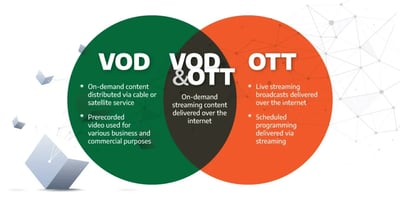In an era of unprecedented digital content consumption, the demand for fast, reliable, and scalable...
The Different Types of Content Delivery Networks (CDNs): A Professional Guide

Content Delivery Networks (CDNs) have emerged as the backbone of the internet, ensuring that content reaches users quickly and efficiently. As a professional in the field, I've explored various types of CDNs to help you understand which might best suit your needs. Here's a breakdown, drawing from industry-leading sources like BlazingCDN, to provide a comprehensive view.
1. Traditional CDNs
Traditional CDNs are the most common form of content delivery networks. They work by caching static content (like images, CSS, and JavaScript files) in multiple locations around the world. When a user requests this content, it is delivered from the nearest server location, reducing latency and improving load times. My experience with traditional CDNs has shown that they are incredibly effective for websites with a global audience, ensuring that static content is quickly accessible regardless of geographical location.
2. Dynamic CDNs
Dynamic CDNs take things a step further by not only delivering static content but also optimizing the delivery of dynamic content. This content, which can change from one user to another, requires more intelligent routing and optimization techniques. Dynamic CDNs use various algorithms to ensure that even personalized content, such as user profiles or real-time data, is delivered quickly. From my professional standpoint, dynamic CDNs are essential for highly interactive websites or applications that rely on real-time user engagement.
3. Peer-to-peer (P2P) CDNs
Peer-to-peer CDNs are a more decentralized approach to content delivery. Instead of relying solely on a network of servers, P2P CDNs allow devices connected to the network to serve content to each other. This method can significantly reduce the load on origin servers and help handle spikes in traffic more efficiently. My personal experience with P2P CDNs has highlighted their utility in distributing large files, such as videos or software updates, where leveraging the bandwidth of the user community can lead to substantial performance improvements.
4. Hybrid CDNs
Hybrid CDNs combine the features of traditional, dynamic, and P2P CDNs to offer a versatile and robust solution. They can dynamically switch between different content delivery methods based on the type of content, current network conditions, and user location. This flexibility makes hybrid CDNs an excellent choice for businesses with diverse content delivery needs. In my professional experience, hybrid CDNs offer the best of all worlds, providing speed, efficiency, and scalability.
5. Cloud-based CDNs
Cloud-based CDNs are integrated into cloud computing environments, offering seamless scalability and global distribution. They leverage the vast infrastructure of cloud service providers to offer content delivery services as part of a broader suite of cloud solutions. Cloud-based CDNs are particularly beneficial for businesses already invested in cloud services, as they can easily scale their content delivery capabilities in line with their cloud resources. My experience with cloud-based CDNs has shown them to be highly reliable and cost-effective, especially for startups and SMEs leveraging cloud technologies.
Here’s What Else to Consider
When choosing a CDN, consider factors such as geographic coverage, cost, ease of integration, and specific features like DDoS protection or edge computing capabilities. Each type of CDN has its strengths and is suited to different kinds of content and business needs.
In conclusion, the landscape of CDNs is diverse, with each type offering unique benefits. Whether you're looking to improve your website's performance, handle dynamic content more efficiently, or leverage the power of the cloud, there's a CDN solution out there for you. Remember, the goal is to enhance your users' experience by making your content as accessible and fast-loading as possible, no matter where they are in the world.


